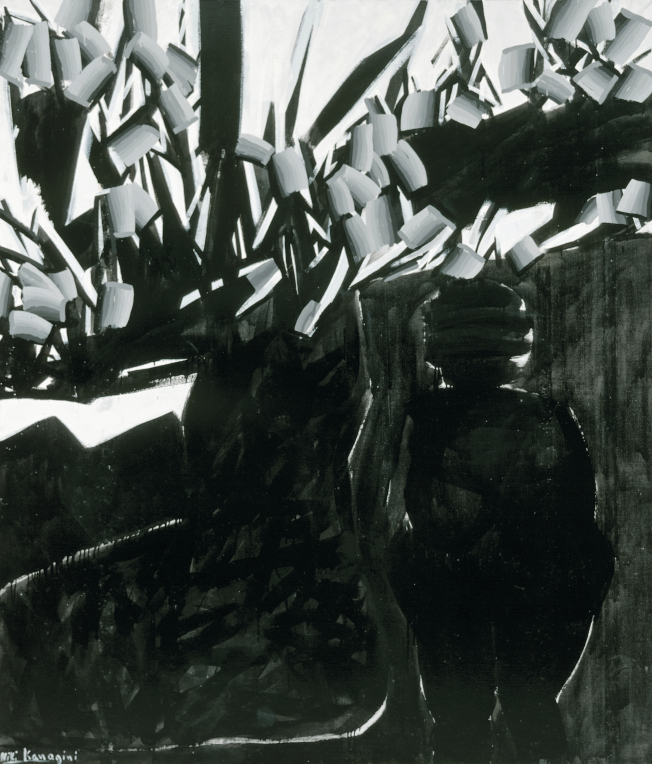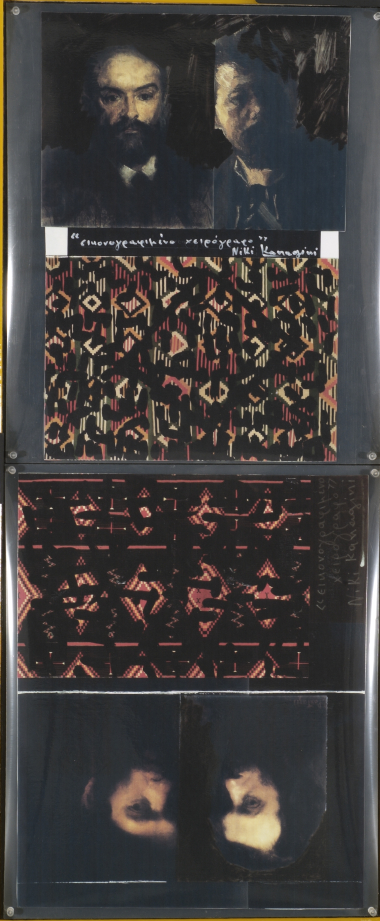Manuscript or Woman and tree, 1980


Manuscript or Woman and Tree, which is dated 1980, is among the early works in the 'Manuscripts' series. The morphology of writing, rather than some specific text, the word, the letter as a linguistic unit fascinate Kanagini, and provided the viewer with a stimulus for personal interpretations. By placing the female figure in front of the images of letters, which are here rendered in an almost gestural fashion, as they fill the upper part of the white background in a disorderly manner, she urges him/her to 'read', to reflect, to follow his/her own individual orbit. Even the colour range in the work, with the use of only black, white, and grey, makes reference to the image of writing.




